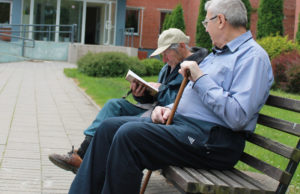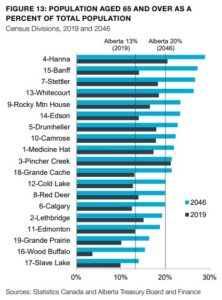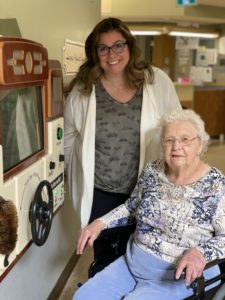Seniors make up a growing proportion of the population in rural communities. As rural communities age, infrastructure, and services need to evolve so seniors can stay active, healthy, and engaged in their communities. Click the expandable menu below for articles about the specific challenges that living in a rural community poses for seniors, and strategies to help seniors age well in rural communities.
Seniors Are the Fastest Growing Population in Rural Areas
Alberta’s population is aging. In 2019, 13% of Albertans were aged 65 years and older, while this percentage is expected to increase to 20% by 2046. Both the proportion of people aged 65 and older and the annual growth of this age group have been increasing rapidly since the start of the decade, specifically since 2011 when the first baby boomers turned 65.

The aging trend is faster in rural compared to urban areas due to several reasons:
- Retired Canadians are moving to rural communities in growing numbers
- Youth aged 15-19 years are leaving
- There are fewer births in rural communities
This shift in demographics means that rural communities need to pay closer attention to their growing number of senior residents. Seniors are the backbone of many rural communities – they are often leaders of municipal governments and long-standing members of service organizations and churches. They also volunteer in great numbers for local causes.
Many seniors want to stay in their communities with their families and friends and an often strong social support system they can draw on. They enjoy the slower pace of rural life and the sense of community with ample volunteer opportunities.
There are big differences in the percentage of seniors that live in rural communities. For example, seniors accounted for more than 20% of the population in the districts of Hanna and Pincher Creek. In contrast, the districts of Wood Buffalo, Slave Lake and Grande Prairie had the lowest percentages of seniors in 2019.

Despite these geographic differences, seniors will make up a growing proportion in most rural communities in Alberta. This will impact future infrastructure and program needs in rural communities.
A study funded by Veterans Affairs Canada asked the question, “what makes a rural community a good place to grow old?”. The findings showed that seniors are a diverse group with diverse needs. They rated several social and structural factors as important to rural aging:
- Friendly and welcoming communities with opportunities to stay active and productive;
- Family and good neighbours close by;
- Affordable housing; and
- Good basic infrastructure (i.e., health and social services, transportation).
Rural communities have recognized the need to develop local programs and infrastructure to support the health and wellbeing of seniors.

